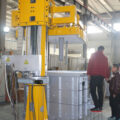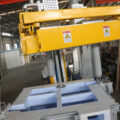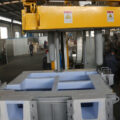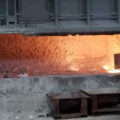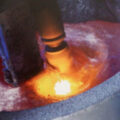Rotary Degassing Aluminum works by rotating nozzle of degassing unit. The rotating nozzle has a rotating shaft, a rotor with blades (connected to the rotating shaft), and a stator with blades. Their interaction can provide the desired bubble shape for the melt. The refined gas emerges into the aluminum melt through the small gap between the rotor and the stator. This degassing device can produce a certain flow pattern in the nearby metal when it is working. The generated bubbles move with the synthesized flow vector and radiate outward, and have a downward component relative to the vertical axis of the blowing device.
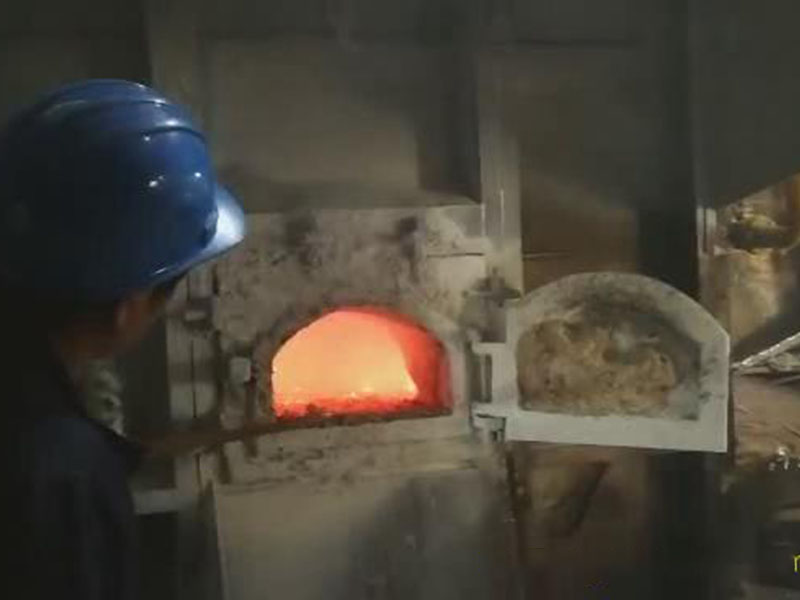
These flow patterns have the following advantages: First, it provides a vertical stirring effect for the melt, and the downward flow of the device (in conjunction with the rotating blade) can make the fine gas become discrete small bubbles. Second, the bubbles can quickly disperse from the point of injection into the melt, which can prevent bubbles from accumulating in the area with the highest bubble concentration; third, the residence time of well-dispersed bubbles in the melt is prolonged because of gravity The bubbles cannot rise to the surface immediately.
Rotary Degassing Aluminum
In the rotary degassing aluminum system, excessive surface element flow is undesirable for several reasons. First of all, it can increase the surface area of the metal, leading to a higher reaction rate with the active gas that may be present. For example, it reacts with oxygen in the air to form an aluminum oxide film, and reacts with water vapor in the air to form hydrogen and an oxide film in the metal. In addition, when the refining bubbles carry the solid particles to the surface of the molten metal, the surface element flow will prevent these particles from separating from the bubbles and mix them into the scum layer formed on the aluminum melt. Excessive east flow can disperse the scum into the aluminum melt again. In addition to surface element flow, eddy currents on and below the melt surface in the reactor are also undesirable. The existence of vortex, especially at the central vertical axis, tends to capture and adsorb scum and slag particles, and return them to the melt, thereby increasing the burden on the refining system. This problem is very serious, especially for the “on-line” processing system with high metal flow rate, the normal residence time of the provided metal in the reactor is less than 5 minutes.
The formation of spiral flow tends to cause the molten aluminum, scum, and molten stains near the stator to move downwards. Therefore, this degassing device is self-invalid at least to a small extent. In fact, impurities can lead or lead to aluminum again. Melt. The combined effect of vortex and spiral flow makes the device only produce limited refining effects, and it cannot avoid this problem. Since the degassing device can not prevent the accidental current and the spiral flow, the only way to reduce the harmful effect of the accidental current and the spiral flow is to reduce the rotation speed of the rotor. However, when the rotor speed is low, the effect of the airflow breaking down into fine bubbles is not optimal, and the dispersed fine bubbles with a large overall contact area cannot be obtained.

